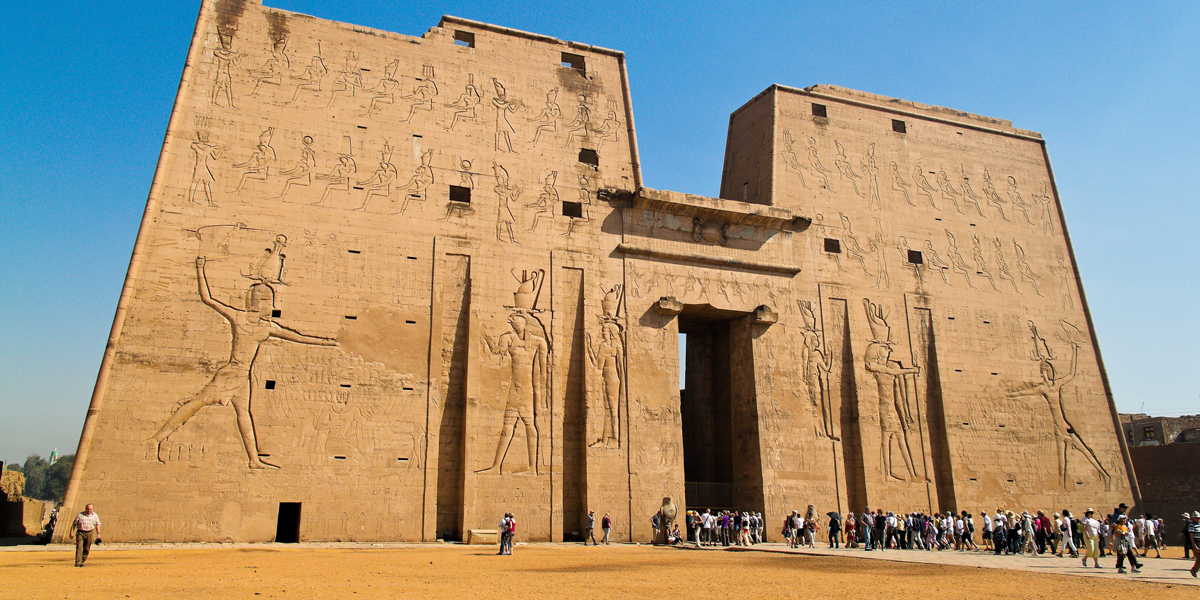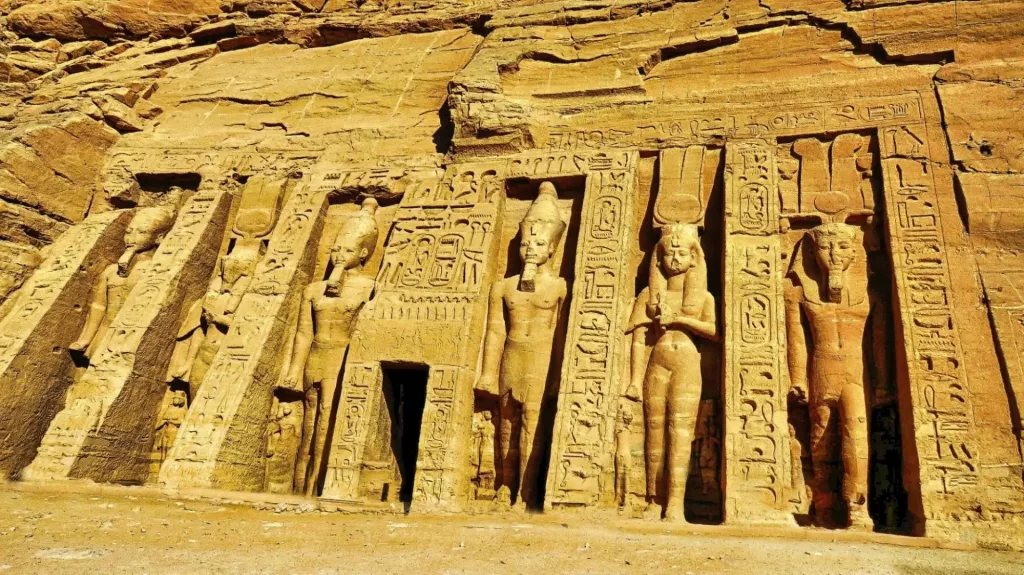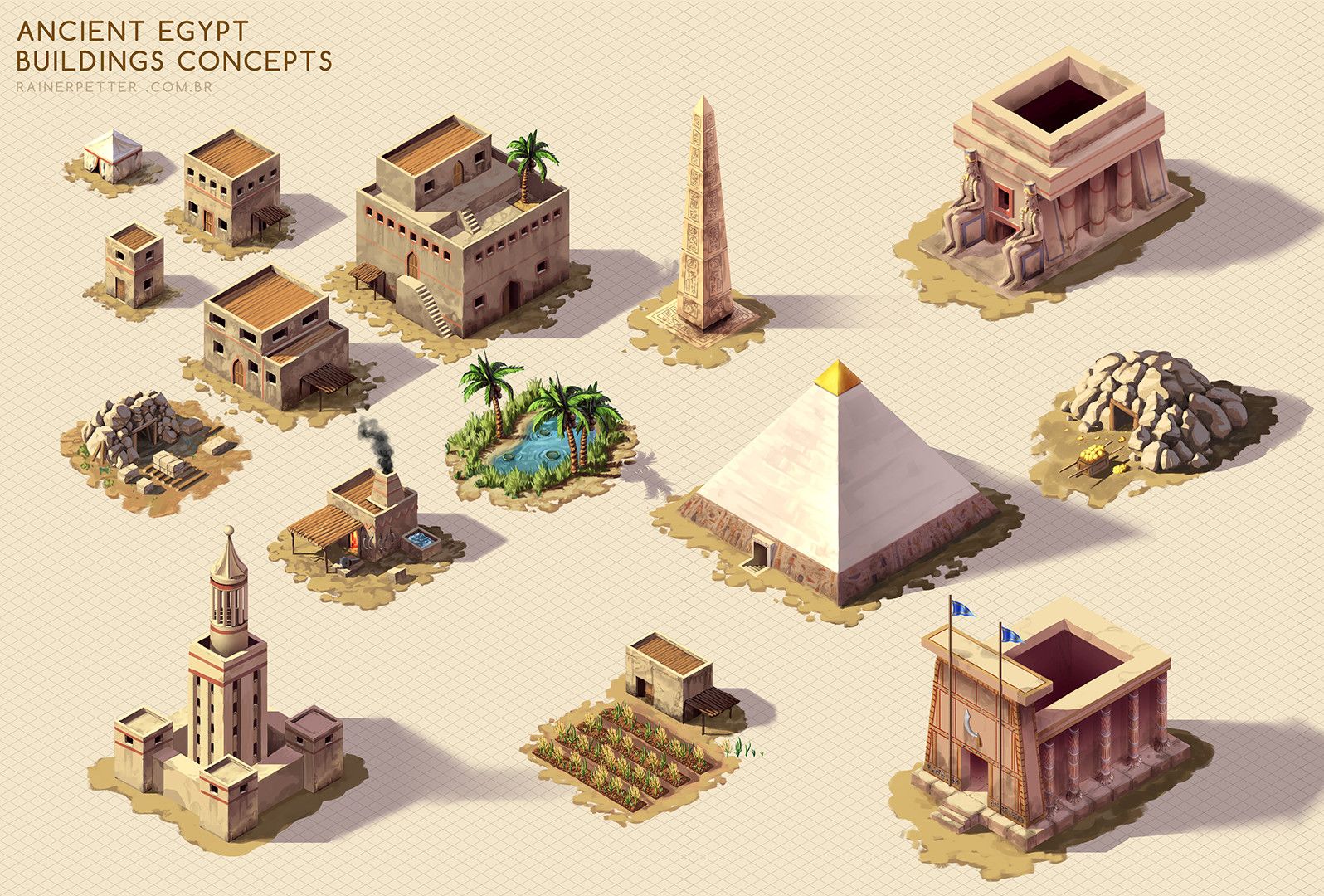Egyptian architecture is one of the most significant and enduring architectural traditions in history. It spans over three millennia, from the early dynastic period around 3100 BCE to the Roman conquest in 30 BCE. This architecture is most renowned for its monumental structures, such as pyramids, temples, and tombs, which have stood the test of time and continue to fascinate people around the world.
Early Dynastic Period (c. 3100–2686 BCE)
- Mastabas: The earliest form of Egyptian tombs was the mastaba, a flat-roofed, rectangular structure with sloping sides. These were made of mudbrick and later stone, serving as tombs for the elite. The mastaba's underground burial chamber was accessed via a vertical shaft.

Old Kingdom (c. 2686–2181 BCE)
- Pyramids: The Old Kingdom is famous for the construction of the pyramids, particularly the Pyramids of Giza. These massive stone structures were built as tombs for pharaohs and symbolize the zenith of royal power. The Pyramid of Djoser at Saqqara, designed by the architect Imhotep, was the first step pyramid and marked a significant development in monumental architecture.
- The Great Pyramid of Giza: Built for Pharaoh Khufu (Cheops), this pyramid is one of the Seven Wonders of the Ancient World. It was the tallest man-made structure in the world for over 3,800 years.
Middle Kingdom (c. 2055–1650 BCE)
- Fortresses and Temples: The Middle Kingdom saw a shift in architectural focus from pyramids to other structures, such as fortresses and temples. The temples of this period began to develop more complex layouts, with multiple rooms and courtyards.
- Mortuary Temples: These temples were built to honor the deceased and were often located near the tombs. The Temple of Mentuhotep II at Deir el-Bahari is an example, featuring a terraced layout that influenced later architectural designs.

New Kingdom (c. 1550–1070 BCE)
- Temple Complexes: The New Kingdom is marked by the construction of massive temple complexes. The most famous are the Karnak Temple and the Luxor Temple in Thebes. These temples were dedicated to the gods, particularly Amun-Ra, and served as places of worship and state ceremonies.
- Hypostyle Halls: A key architectural feature in New Kingdom temples is the hypostyle hall, a large room filled with columns. The most famous example is the Great Hypostyle Hall at Karnak, which contains 134 massive columns arranged in 16 rows.
- Rock-Cut Tombs: During this period, pharaohs and nobles began to be buried in rock-cut tombs in the Valley of the Kings, rather than in pyramids. These tombs were decorated with elaborate wall paintings depicting the deceased's journey to the afterlife.
Late Period (c. 664–332 BCE) and Ptolemaic Period (c. 332–30 BCE)
- Continued Temple Construction: Even in the Late Period, Egyptian architecture maintained its traditional forms, with the construction of large temples like the Temple of Horus at Edfu and the Temple of Isis at Philae.
- Ptolemaic Influence: The Ptolemaic rulers, who were of Greek origin, added Hellenistic elements to Egyptian architecture while still adhering to traditional styles. The blend of Greek and Egyptian motifs can be seen in temples like the Temple of Kom Ombo.

Characteristics of Egyptian Architecture
- Monumentality: Egyptian architecture is characterized by its grand scale and durability, designed to last for eternity, especially in religious and funerary structures.
- Use of Stone: The Egyptians were among the first to use stone extensively in construction, particularly limestone, sandstone, and granite. This contributed to the longevity of their structures.
- Symbolism: Egyptian architecture is deeply symbolic. The alignment of temples, the use of certain materials, and the inclusion of specific architectural elements (like obelisks) often had religious or cultural significance.
- Post and Lintel Construction: The Egyptians primarily used a post-and-lintel system, where horizontal beams (lintels) were supported by vertical posts (columns). This system is evident in temples and other large structures.
Legacy
Egyptian architecture has had a profound influence on later architectural traditions, particularly in classical architecture, and continues to inspire modern design. Its emphasis on monumentality and symbolism, as well as its use of columns and stone construction, can be seen in various historical and contemporary buildings around the world. The endurance of Egyptian monuments has ensured that their architectural innovations remain a subject of study and admiration to this day.

